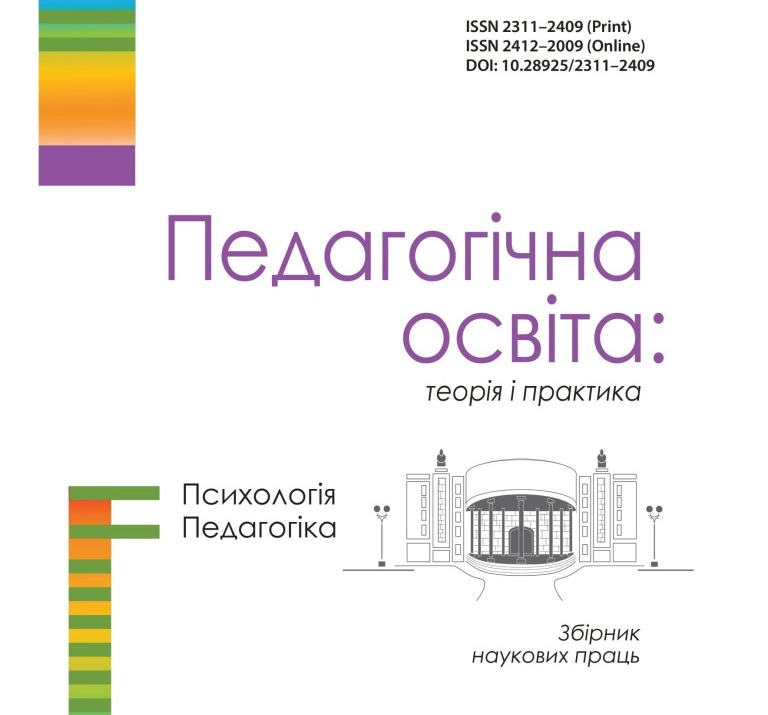EXPERIENCE TO PROVE OWN OPINION IN THE PROCESS OF DEVELOPMENT OF CRITICAL THINKING IN JUNIOR STUDENTS
Abstract
The article is devoted to the study of the development of critical thinking, the methods of its implementation,
the basic principles and techniques that should be used by the teacher during the training sessions
for the successful achievement of the result by the students of the new Ukrainian school. The article deals
Збірник наукових праць № 31 • 2019 р. ISSN 2311–2409 (Print) ISSN 2412–2009 (Online) 53
DOI: 10.28925/2311–2409
with the peculiarities of the concept of “skill”, “knowledge”, “skills”, “critical thinking”. The task and purpose
of the research are determined to prove their own opinion in the process of development of critical thinking
in junior pupils. The works of national and foreign scientists, pedagogues-practitioners are analysed.
Recommendations for teachers and practical advice to parents about skills to prove their own opinions are
offered.
The concept of “critical thinking” has been known for more than 50 years and came to us from the United States.
The world-renowned are the scientific works of such researchers of technology of critical thinking as B. Blum,
M. Lipman, D. Clusters, D. Halpern, A. Crawford, K. Meredith, S. Metjouz, R. Paul, D. Duey, R. Sternberg, C. Temp,
J. L. Styl, S. Uolter, and others. In his writings, O. Pometun describes the development of critical thinking as one
of the most modern teaching technologies that is closely related to interactive learning. The purpose of this
technology is to develop students’ critical thinking skills, which will be necessary not only in learning but also
in future in life.
The author substantiates the significance of the use of interactive technologies and learning strategies
in the elementary school educational process, generalizes the view of the researchers that lessons for beginners
will only be interesting when significant attention is paid to the development of critical thinking, creativity, where
each child will be the main actor and only the course of the lesson will depend on the actions of this child.
The article reflects the value of the correct problem posed by the problem, which contributes to the ability to prove
their own thoughts in the development of critical thinking of students.
Key words: knowledge, critical thinking, skills, elementary school,
Downloads
References
Андрєєв В.І. Педагогіка: Навчальний курс для творчого саморозвитку. 2-ге вид. К.: Центр інно-
ваційних технологій, 2000.
Баєв Б.Ф. Психологія навчання. К., 1994. С. 59–61.
Бех І.Д. Виховання особистості. Кн. 2: Особистісно орієнтований підхід: наук.-практич. засади.
К.: Либідь, 2003. 342 с.
Бойко А.М. Виховні суб’єкт-суб’єктні відносини вчителів і учнів як основа модернізації освітньої
галузі України // Початкова школа. 2004. № 4. С. 4–8.
Дичківська І.М. Інноваційні педагогічні технології: підруч. К.: Академвидав, 2012. 352 с.
Крайг Г. Психологія розвитку. Спб.: Пітер, 2000. 922 с.: іл. (Серія «Майстри психології»).
Мелешко В., Мельник Ю. Формування логічних умінь як компонента алгоритмічної культури
молодших школярів // Початкова школа. 2006. № 11. С. 55–58.
Пометун О.І. Методика розвитку критичного мислення на уроках історії // Історія і суспільствознавство
в школах України: теорія та методика навчання. 2012. № 2. С. 3–7.
Пометун О.І. Сучасний урок. Інтерактивні технології навчання: наук.-метод. посіб. / Пометун О.І.
та ін. К.: А.С.К., 2006. 192 с.
Розвиток критичного мислення на уроках інформатики. URL: http://www.rusnauka.com/7_
NMIW_2011/Pedagogica/5_78583.doc.htm
Савченко О.Я. Дидактика початкової освіти: підруч. К.: Грамота, 2012. 504 с.
Терно С.О. Теорія розвитку критичного мислення (на прикладі навчання історії): [посіб.
для вчителя]. Запоріжжя: Запорізький нац. ун-т, 2011. 105 с.
Шарко В.Д. Сучасний урок: технологічний аспект: посіб. для вчителів і студентів. К., 2006. 220 с.
Шиян Н.І., Самусенко Ю.В. Використання блочно-модульної системи навчання в школах ново-
го типу // Організація навчально-виховного процесу в середніх загальноосвітніх закладах ново-
го типу: досягнення, проблеми, перспективи: мат-ли Всеукраїнської наук.-практич. конференції.
Полтава, 1996. С. 333–334.

